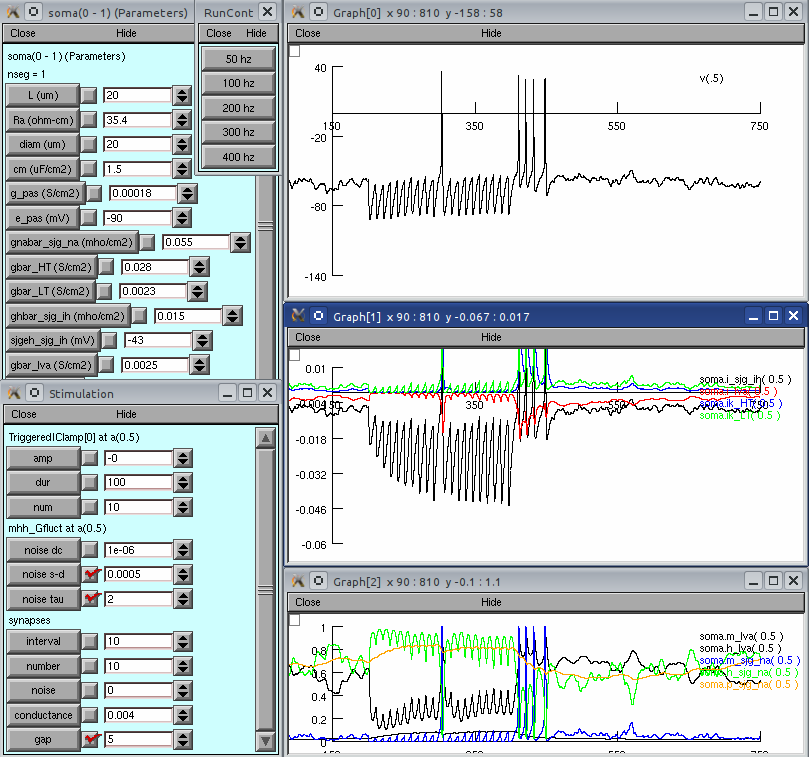NEURON model files derived from the paper:
C. Kopp-Scheinpflug, A.J.B. Tozer, S.W. Robinson, B.L. Tempel,
M.H. Hennig and I.D. Forsythe (2010). The Sound of Silence:
ionic mechanisms encoding sound termination. Neuron,
71(5), 911-925.
The model simulates rebound firing in SPN neurons evoked by sequences of inhibitory inputs. In the paper we demonstrate that the ionic mechanism underlying these rebound APs are highly reliable and precise, and can mediate detection of tiny gaps in sound-evoked activity. The code is split into the following files:
run_spn_model.hoc: Main simulation script
allgraphs.hoc: Opens the graph windows.
conductance_noise.hoc: Parameters for the conductance noise.
current_inj.hoc: Initialises external current sources.
ht.mod: The high-threshold K+ conductance.
lt.mod: The low-threshold K+ conductance.
lva.mod: The T-type Ca++ conductance.
mhh_Gfluct.mod: Conductance noise model to simulate (additional, unspecific) excitatory synaptic inputs.
netstims.mod: Implements infrastructure for the synaptic inputs.
simcontrols.hoc: The parameter windows.
sjg_ih.mod: The non-specific hyperpolarisation activated cation conductance.
sjg_na.mod: The Na+ conductance.
spn_neuron.hoc: The neuron model.
synapses.hoc: Initialises synapses.
trigstim.mod: Delivers current pulses via NetCon.
The script run_spn_model.hoc can be used to simulate the effects of inhibitory synaptic inputs, in combination with excitatory inputs modelled as conductance based noise. It allows for specification of the duration and frequency of the inputs, and the duration of the gap between two successive inputs. The following picture shows a simulation of a rebound spike generated by 10 presynaptic spikes at 100Hz in a gap of just 5ms:
 Last modified: Wed Sep 7 17:42:57 BST 2011
Last modified: Wed Sep 7 17:42:57 BST 2011